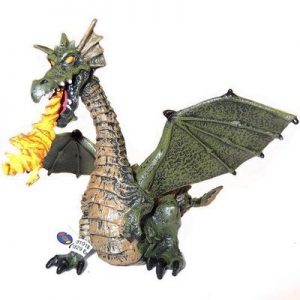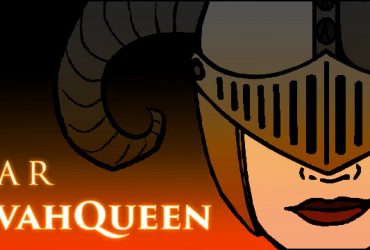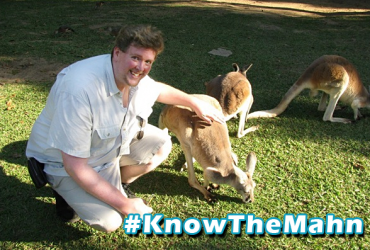Will the real blue dragon, please stand up?
Adjudicating illusions is often a tricky affair, and I don’t see a new edition changing that. In many cases, the aftermath of an illusion-based encounter is often a bit of a lull, as players and GM alike sigh at yet another boring or frustrating illusion encounter. The two most common outcomes that I see are either the PCs immediately disbelieving and moving on with no effect or the PCs never knowing about the illusion and moving on without important information. The encounter in which the players know something is an illusion, but the PC continually fails a save is also a real downer. One of my pet peeves is when players metagame that something is an illusion and simply bypass the roleplay aspect of it. Irritating in all cases.
What I want to discuss are techniques I have found that bring new depth to my illusory encounters. These techniques vary from simply monitoring my pattern of describing scenes to using special handouts or miniatures. Just as a refresher, let’s grab a couple of key phrases from Paizo’s PRD that I keep in mind during my solutions.
“[With a figment spell] you cannot make a visual copy of something unless you know what it looks like (or copy another sense exactly unless you have experienced it).”
“A glamer spell changes a subject’s sensory qualities, making it look, feel, taste, smell, or sound like something else, or even seem to disappear.”
“Creatures encountering an illusion usually do not receive saving throws to recognize it as illusory until they study it carefully or interact with it in some fashion.”
“A failed saving throw indicates that a character fails to notice something is amiss.”
One way I combat illusion issues is to come up with different ways of describing the encounter. A change in tone or detail when describing something is often a clue that something is amiss, much in the same way that transitioning from a made up description to reading flavor text can sometimes be jarring. To solve this problem at my table, I will often plan out any illusions ahead of time, and write (or rewrite) flavor text to include them. This gives me a couple of options. First, when the players see me reading (or re-reading) they assume business as usual. Second, by looking at the NPC background and PCs skills I can incorporate their ability to detect something into the actual description. Does the NPC have a reason to know what a 15 ft. venus flytrap looks like? This beats describing something only to follow up with “anybody have scent or knowledge (nature)?” The third thing that this method provides is having now read, reread, and written a description. Three times the charm! I usually have enough information at this point to be able to describe the scene without needing to refer to the flavor text, which is another way to avoid any jarring changes in descriptions that lead to clues the PCs shouldn’t have. Optionally, providing written flavor text customized to the PCs will allow you to account for their abilities and skills without the obvious inclusion of saves and checks.
While describing things to players is a (the?) core job of the GM, you can’t always ensure that all your players are seeing the same thing as each other, nor as you are describing. To this end, I will often fall back to handouts or miniatures. Many GMs, myself included, will describe an encounter, read the flavor text for a creature, and then show the image from the bestiary entry. If you are in the habit of doing this, then you can provide some subtle clues about it being an illusion while still providing the information the PCs need to assume there is no illusion. Simply changing the color of the creature can work wonders. The PCs may just think it is a variation instead of immediately knowing that the NPC has never encountered the creature and is guessing at the color. Alternately, you can do some imagery magic to concoct a variant creature image for the same reason. If an NPC knows what a manticore is, but has never seen a lamia, then there is a good chance they might use the familiar creature to create an illusion of the unfamiliar creature. Whether you simply show the image on your monitor, print it out and pass it around the table, or message the image to your players … seeing an image is going to give them the sense that it is real. If you have their stats and want to preroll various checks (as in my previous example of tailoring flavor text) then you can also provide customized images to each player to give them subtle clues that something is amiss.
While both of those examples have worked well for me, my personal favorite is the use of non-standard miniatures. One of my favorite encounters (of my 20 years of gaming) was a low-level (2nd I think) encounter with a cabal of kobold casters (I think it was a witch, sorcerer, bard, and cleric). The party had been sent to investigate “a dragon terrorizing the farmlands” while assuming that it was just the local kobold tribe. Encounter after encounter with kobolds scared of their dragon master convinced the PCs that they were in over their heads. When it finally came time for the encounter, I played it out as a dragon encounter would have … with some limitations based on the illusion and conjuration spells that the cabal had access to. Visual illusions of the creature, auditory illusions of the stomping and the roaring, conjurations of wind and force to move foliage and leave tracks, spells to invoke fear and emulate breath weapons. It took them all to create this fearsome enemy! Because these kobolds had never seen a dragon before, I chose to use a toy dragon from my random collection of toy figures. It is not uncommon for me (and many GMs) to simply grab a figure to use as a proxy. My players were very surprised when I dropped a huge-ish dragon on the table and said “this is what you see” … and immediately worried for their PCs lives. I was asked a number of questions, most of them I had expected: “it really is green?”, “that is really the fire breath?”, “that is the actual size?”, and more. Each time I fell back on “what you see is what you see” along with the other staples of a dragon encounter. The PCs had never seen a dragon before, the kobolds had never seen a dragon before, so it was very fun to see both sides scramble to gain the upper hand. Until they came into contact with the “dragon” or one of the spell effects used to simulate the dragon, the PCs only had the miniature to work with. One player realized that green can’t breath fire and asked for a knowledge check to confirm, at which point he was certain it was an illusion. He used this knowledge to send the ranger to look for the caster while trying to convince the others it wasn’t real.
Well, that’s all the time I have today to discuss illusions from behind the screen. Hopefully my insight and these ideas will help you enhance your illusory encounters in the future!








